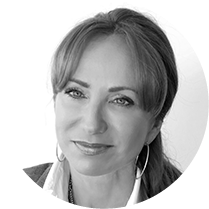Curcumin in Health and Disease
A special issue of International Journal of Molecular Sciences (ISSN 1422-0067). This special issue belongs to the section "Bioactives and Nutraceuticals".
Deadline for manuscript submissions: closed (25 January 2019) | Viewed by 170686
Special Issue Editor
Interests: noncommunicable diseases; clinical and preclinical studies; real world evidence; patient reported outcomes; biomolecular research; cellular biology; plant derived bioactives; phytopharmaceuticals; biomarkers
Special Issues, Collections and Topics in MDPI journals
Special Issue Information
Dear Colleagues,
The plant-derived polyphenol Curcumin has been used in health and disease for thousands of years and its therapeutic effects have been successfully utilized in Ayurvedic and Traditional Chinese Medicine in order to treat inflammatory diseases. Current results from modern biomolecular research reveal the modulatory effects of Curcumin on a variety of signal transduction pathways associated with inflammation and cancer. In this context, anti-oxidant, anti-inflammatory, anti-tumorigenic, and even anti-metastatic activities are discussed. On the cellular level, reduced activity of several transcription factors, such as NFkB or AP-1 and suppression of inflammatory cytokines, matrix degrading enzymes, metastasis related genes and even microRNAs are reported. On functional levels, these molecular effects translate into reduced proliferative, invasive and metastatic capacity, as well as induced tumor cell apoptosis. All these effects have been observed not only in vitro but also in animal models. In combination with anti-neoplastic drugs like taxols or kinase inhibitors or radiation therapy, Curcumin potentiates their therapeuthic power and shows even protective effects against undesired side effects.
Natural plant-derived compounds like Curcumin have one significant advantage: They largely do not exert side effects. This feature qualifies Curcumin for primary prevention, in healthy persons with a predisposition to cancer, arteriosclerosis or chronic inflammatory dieseases. Nonetheless, Curcumin is considered "safe", however, toxic effects especially concerning high dosages, long-term intake and pharmacological interactions with other compounds have to be tested.
This Special Issue examines in detail, and provides an update on, the molecular targets, protective effects, and modes of action of natural plant-derived compounds and their roles in the prevention and treatment of human diseases.
Prof. Dr. Beatrice E. Bachmeier
Guest Editor
Manuscript Submission Information
Manuscripts should be submitted online at www.mdpi.com by registering and logging in to this website. Once you are registered, click here to go to the submission form. Manuscripts can be submitted until the deadline. All submissions that pass pre-check are peer-reviewed. Accepted papers will be published continuously in the journal (as soon as accepted) and will be listed together on the special issue website. Research articles, review articles as well as short communications are invited. For planned papers, a title and short abstract (about 100 words) can be sent to the Editorial Office for announcement on this website.
Submitted manuscripts should not have been published previously, nor be under consideration for publication elsewhere (except conference proceedings papers). All manuscripts are thoroughly refereed through a single-blind peer-review process. A guide for authors and other relevant information for submission of manuscripts is available on the Instructions for Authors page. International Journal of Molecular Sciences is an international peer-reviewed open access semimonthly journal published by MDPI.
Please visit the Instructions for Authors page before submitting a manuscript. There is an Article Processing Charge (APC) for publication in this open access journal. For details about the APC please see here. Submitted papers should be well formatted and use good English. Authors may use MDPI's English editing service prior to publication or during author revisions.
Keywords
- Curcumin
- natural compounds
- bioactives
- biomarkers
- molecular pathways
- cancer
- inflammation
- prevention
- combination therapy
- toxicity / safety







